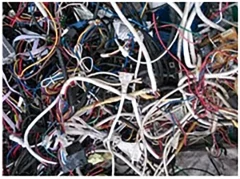

Říj . 31, 2024 18:35 Back to list
Understanding Eddy Current Separators How They Work
Eddy current separators are essential tools in the field of materials recycling and waste management. They are particularly effective for separating non-ferrous metals, such as aluminum, copper, and zinc, from a variety of materials, including plastics, paper, and other waste products. This technology harnesses the principles of electromagnetism to efficiently sort materials, significantly enhancing the recycling process.
Understanding Eddy Current Separators How They Work
As a non-ferrous metal enters the magnetic field, it experiences a change in magnetic flux. This change induces electrical currents, known as eddy currents, within the metal. These eddy currents generate their own magnetic fields that oppose the original magnetic field of the rotor. According to Lenz's law, this opposition creates a repulsive force that effectively separates the non-ferrous metal from non-metallic materials. The non-ferrous metals are then propelled away from the conveyor belt and collected in a designated area, while the remaining non-metallic materials continue along the conveyor, ultimately being directed to other processing systems.

One of the significant advantages of eddy current separators is their efficiency. They can achieve high separation rates with minimal operational cost and energy consumption. Additionally, these separators are highly adjustable, allowing operators to configure the magnetic field strength and the speed of the conveyor belt to adapt to different material streams. This flexibility makes eddy current separators valuable for various applications, including scrap metal recycling, municipal solid waste processing, and electronic waste recovery.
Moreover, the ecological benefits of using eddy current separators cannot be overstated. By effectively separating and recovering non-ferrous metals, these machines reduce the volume of waste sent to landfills and promote the recycling of valuable materials. The environmental impact is substantial, as recycling metals conserves natural resources and uses significantly less energy compared to extracting and processing ores.
Understanding the mechanics of eddy current separators illustrates their importance in today's recycling efforts. As industries and communities increasingly prioritize sustainability and resource conservation, the role of advanced separation technologies will continue to grow. With advancements in design and increased automation, eddy current separators are likely to become even more efficient and user-friendly, further optimizing recycling processes and enhancing environmental stewardship.
In conclusion, eddy current separators are a critical part of modern recycling systems. Their ability to effectively and efficiently separate non-ferrous metals from other materials not only contributes to successful recycling efforts but also plays a vital role in protecting our planet. As we move towards a more sustainable future, technologies like the eddy current separator will remain at the forefront of waste management and material recovery efforts.
Latest news
Troubleshooting Common Eddy Separator Problems
NewsJul.04,2025
The Role of Metal Recycling Plants in Circular Economy
NewsJul.04,2025
The Impact of Recycling Line Pickers on Waste Management Costs
NewsJul.04,2025
Safety Features Every Metal Shredder Should Have
NewsJul.04,2025
How Industrial Shredders Improve Waste Management Systems
NewsJul.04,2025
How Cable Granulators Contribute to Sustainable Recycling
NewsJul.04,2025